Saline Implants
The object inserted is a prosthesis, that is, a foreign substance. The development of technique has been in part surgical, how to augment the breast with the least evidence it has been done, but also technological, how to leave foreign material in the body with no ill effects, short or long term.
The material contained in the saline implant is essentially innocuous, provided it is sterile. The saline is the body’s own fluid, and should the prosthesis leak or burst, the saline will do no harm, and saline filled prostheses have been in use in the USA since the '80’s. The concern then is the bag that contains the saline.
The saline containing bag has the advantage that it can be inserted uninflated through a minimal incision, and then filled through a self-sealing valve when in place. According to the patient’s preferences and the surgeon’s intentions, the shape of the prosthesis can be selected from a flattened sphere, a teardrop shape, or round; size is also a selectable decision.
The bag itself is made of rubberized silicone, called room temperature vulcanized (RTV) silicone elastomer, a material developed in the early 40’s by Corning Glass and General Electric for insulating electric motors. It has to pass the FDA requirements for implanting into the human body. No material exists that cannot be damaged, and although the bag is tough and deformable, it can be damaged at insertion, by subsequent rough handling, or either the bag or the valve may fail after a period of time. If failure should occur, the shape of the breast will be altered but there will be no untoward local reaction to the saline.
When in place, some patients have reported a sensation of “sloshing water” with movement, which is probably exactly what does happen; other patients, or their partners, report an unnatural hard feeling to the breast.
There is no such thing as an operation which does not have a potential for complications. The natural reaction of the body to any foreign material is to wall it off with fibrous (scar) tissue. An implanted prosthesis is liable to this reaction and to become tightly encapsulated by scar. This may be painful and may cause cosmetic distortion. Treatment is possible, though not always acceptable, by simple manual compression to break the capsule – it might also break the prosthesis! The alternative is an open operation to incise the capsule (capsulotomy) and/or remove/replace the prosthesis.
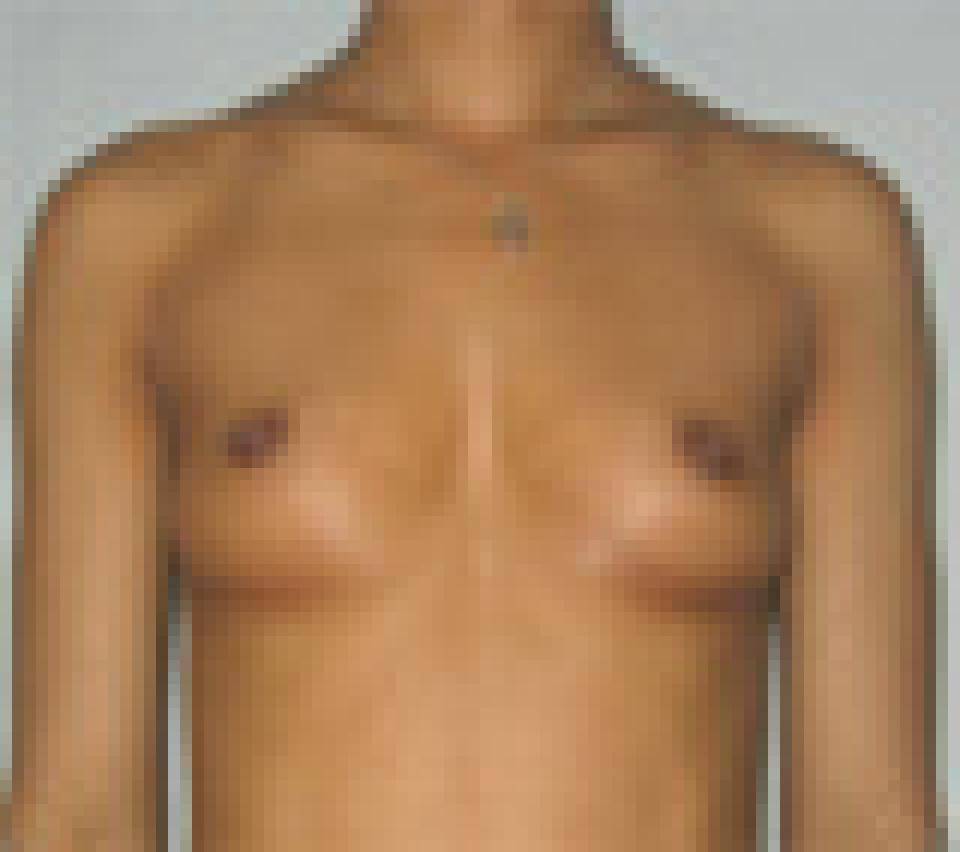 before
before
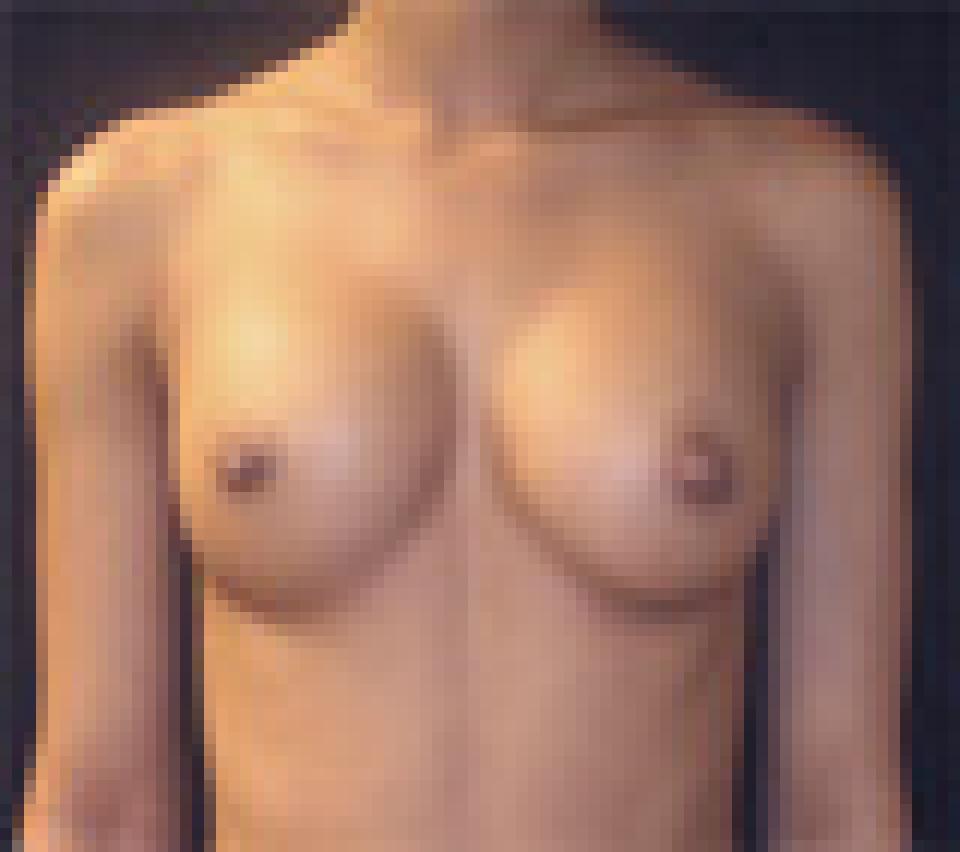 after
after
These following photographs depict a small framed 23 year old woman who wanted to have a larger and fuller bust. She underwent breast augmentation with 280 cc smooth, round saline implants.
The implants were placed beneath her pectoralis muscles through incisions in the axilla.The trans-axillary incision is a good option for a woman who wants no incisions on the breasts. The incision is usually placed in an existing fold in the axilla, minimizing its perceptibility after surgery.
The post-operative photographs depict her at approximately 6 months after surgery.
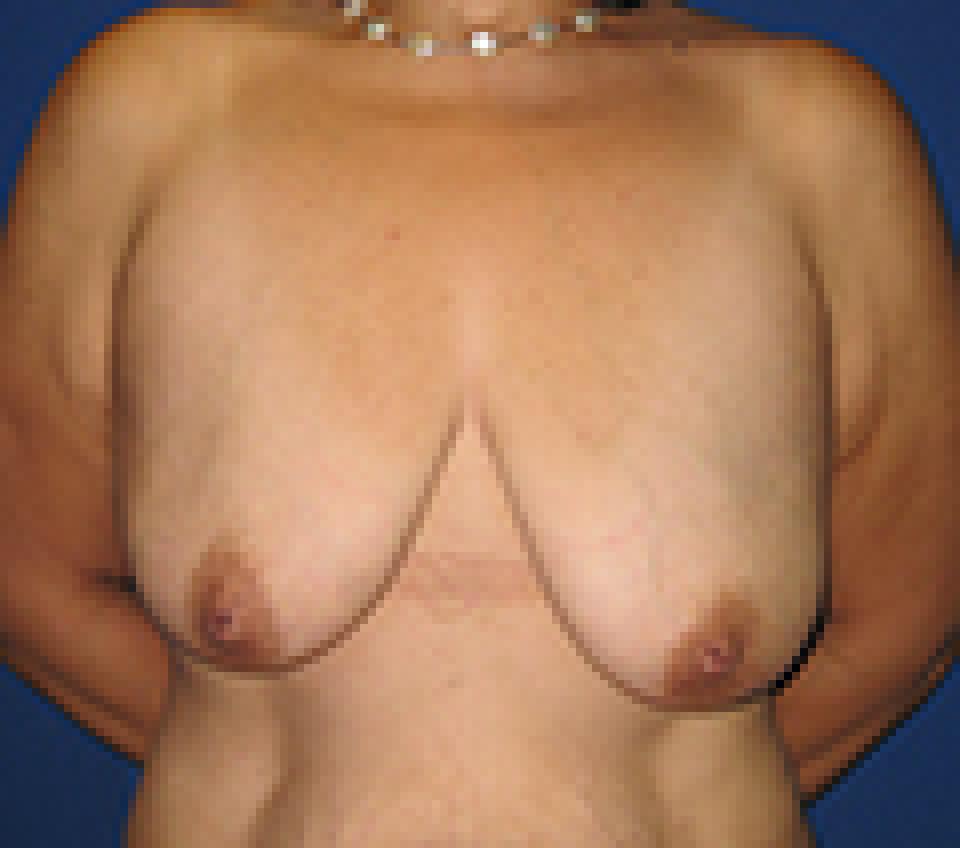 before
before
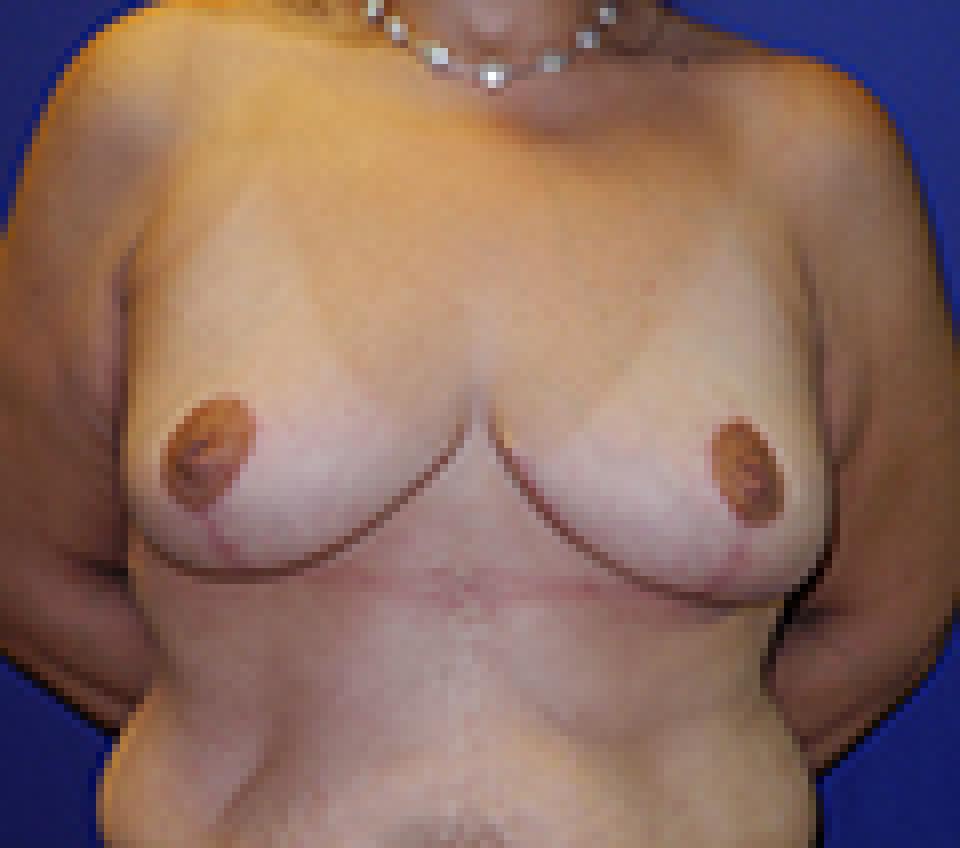 after
after
This 37 year old woman reached her plateau weight after losing 91 pounds following bariatric surgery. She had a breast lift or mastopexy using a technique which leaves behind scars in the shape of an “anchor.”
A breast lift or mastopexy is an operation which rearranges breast tissue so that the new breast shape is typically shorter and rounder. Unfortunately, patients who have lost a large amount of weight often do not have enough breast tissue remaining to rearrange into a naturally appearing breast. This woman was fortunate to have enough breast tissue after a 90 pound weight loss to achieve the breast shape that is visible in her post surgery photographs.
While an implant can provide the volume that is lacking after massive weight loss, the weight of the implant can also be very taxing on compromised skin, such as that which is typical after massive weight loss. Commercially available skin substitutes can provide the strength needed for successful use of implants in such cases.
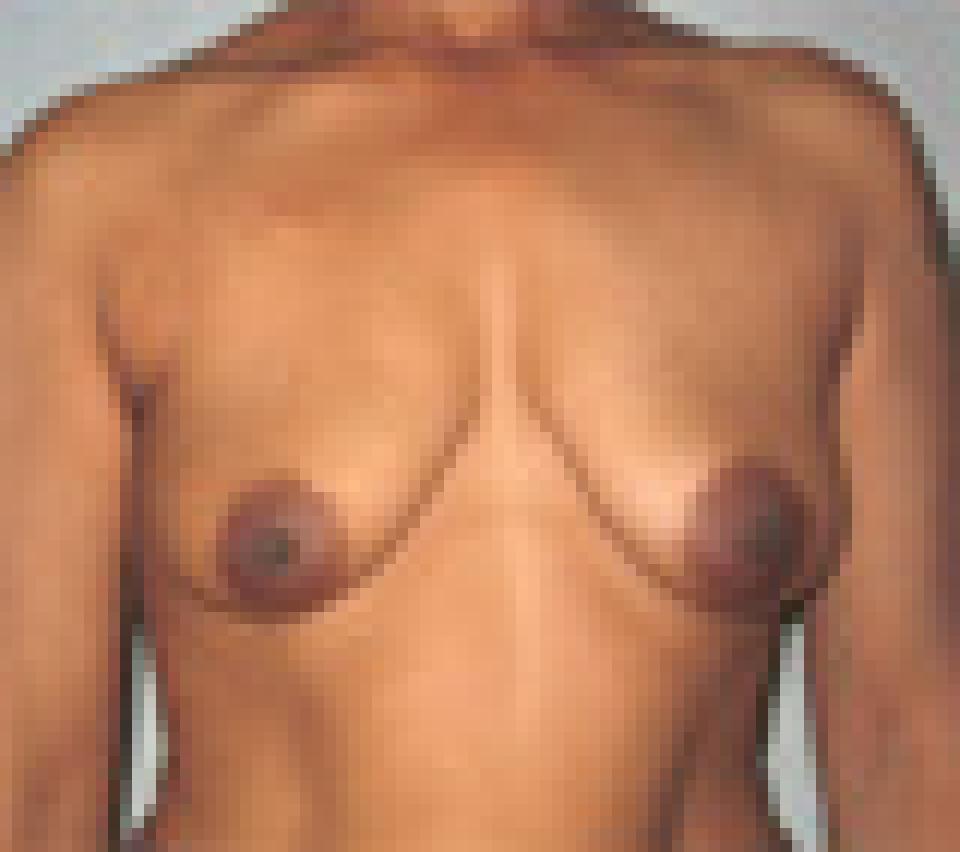 before
before
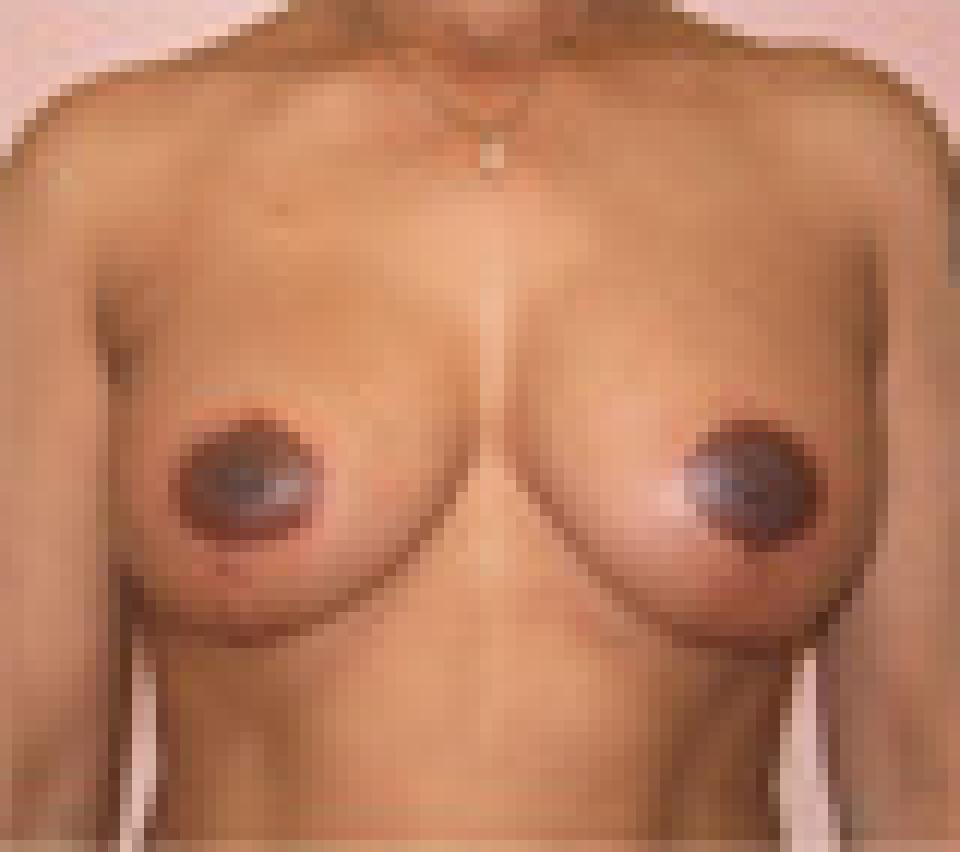 after
after
This case depicts a 47 year old woman who had borne two children and felt that her breasts had developed a sagging and deflated appearance.She underwent a vertical or "lollipop" incision breast lift along with placement of 300 cc smooth, round saline implants beneath the pectoralis muscles.
Her post-operative photographs depict her appearance approximately two months after surgery.This procedure also involves reduction of the areolas as needed in order to create a balanced and aesthetically attractive appearance. Asymmetries between the breasts can often be significantly improved as well.
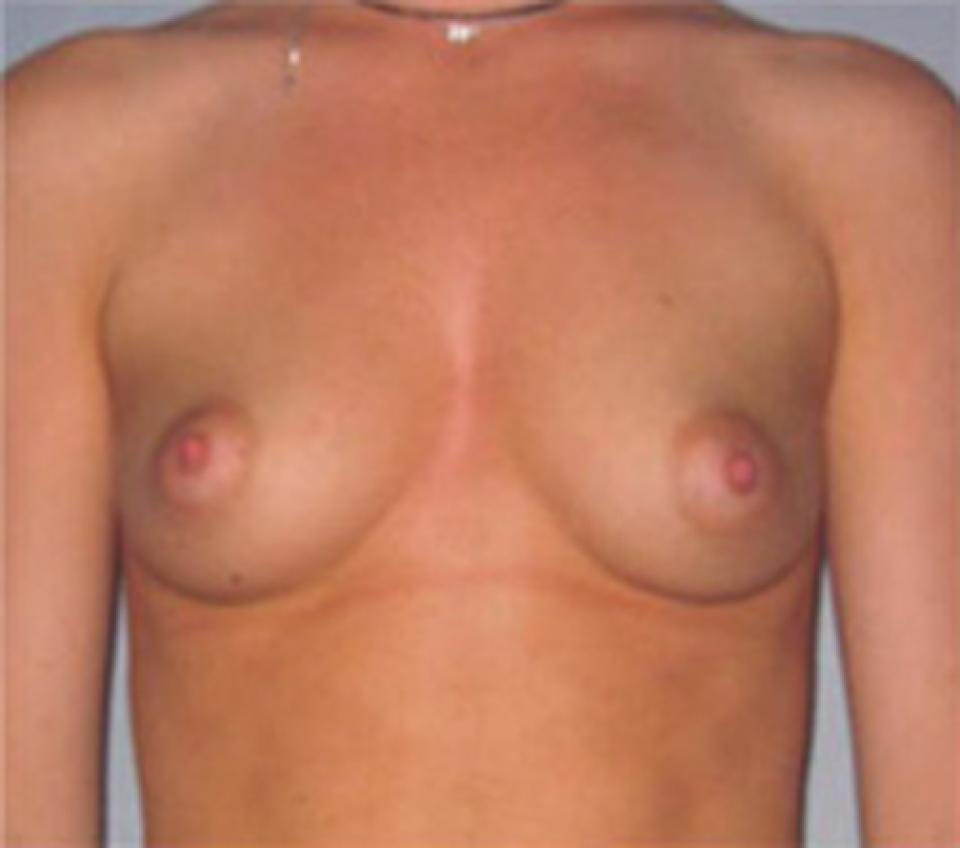 before
before
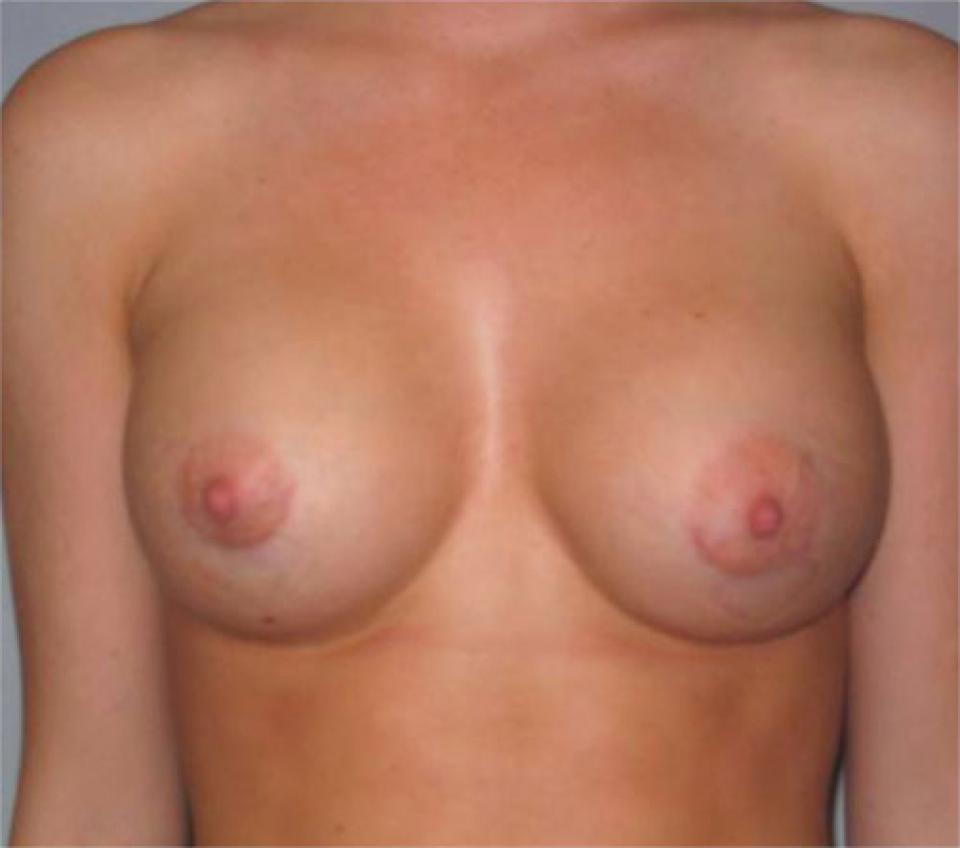 after
after
The following photographs depict an 18 year old woman who wished to have a larger and fuller bust. She underwent breast augmentation with smooth, round 330 cc saline implants.The implants were placed beneath her pectoralis muscles using incisions placed within the areolas.
The post-operative photographs depict her at approximately 6 months after her surgery. Peri-areolar incisions can heal nearly imperceptibly. They are hidden in virtually all fashions and swimwear. Dr. Belsley can place either saline or silicone implants through this type of incision.
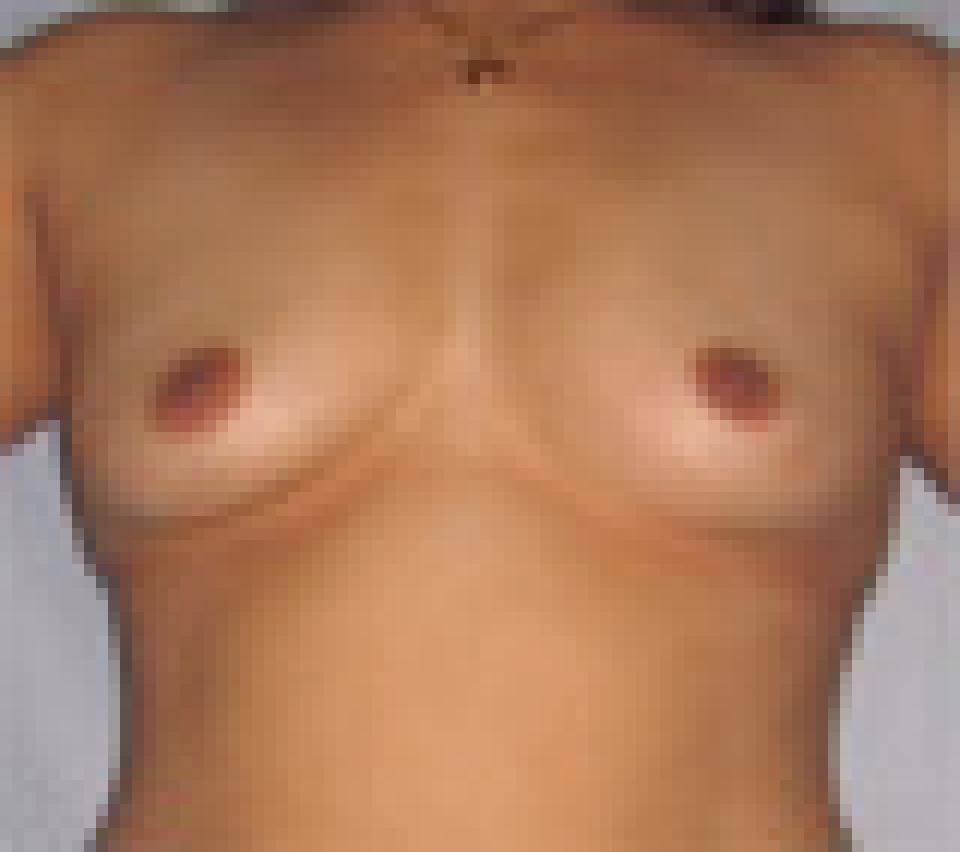 before
before
 after
after
This case depicts a 40 year old woman who wished to have a larger and fuller bust.She underwent placement of 350 cc smooth, round saline implants. The implants were placed partiallly beneath her pectoralis muscles through an incision in the lower fold of the breast.
The post-operative photographs depict her at 3 months after surgery. The inframmamary fold incision is a particularly good option for women who have a well-developed breast fold before surgery. Because of this individual's anatomy, the incisions will be difficult to see at any angle.
 before
before
 after
after
This case depicts a 37 year old woman who had borne one child and had noted that her breasts had begun to sag and develop a deflated appearance.
She underwent a vertical or "lollipop" incision breast lift along with placement of 300 cc smooth, round saline implants beneath the pectoralis muscles. Her post-operative photographs depict her appearance approximately one year after surgery.
This case study also demonstrates how the nipple and areolar positions located too low and too close to the midline in this case, can be improved as part of the procedure.
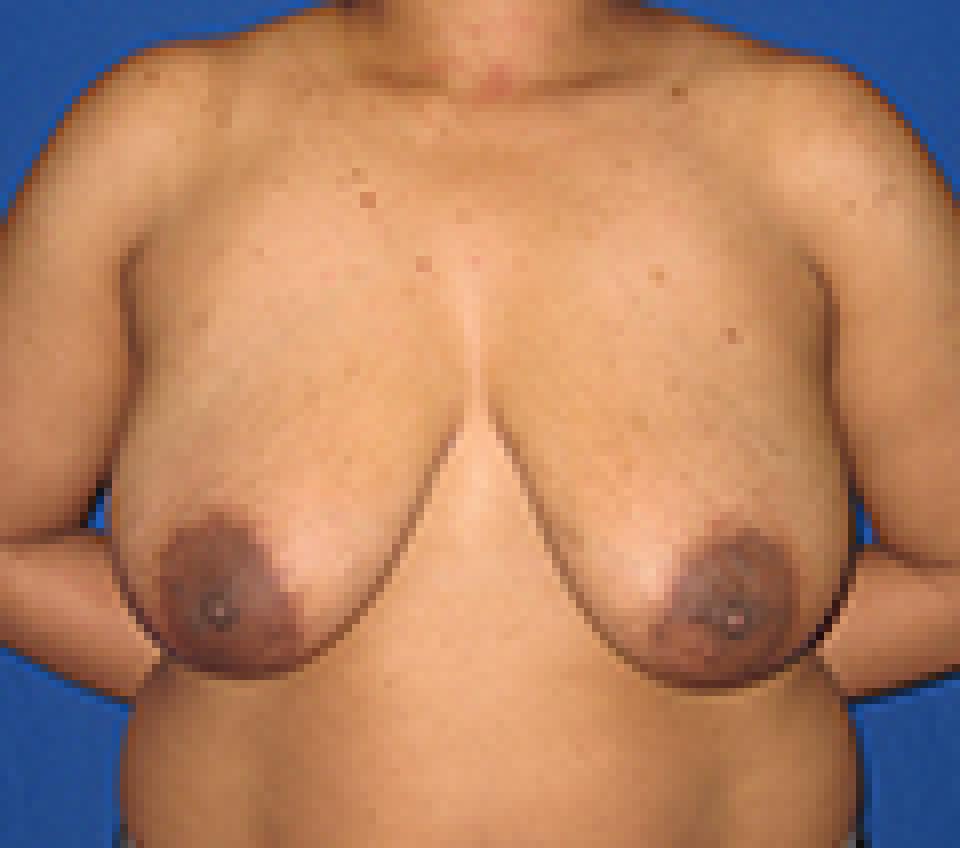 before
before
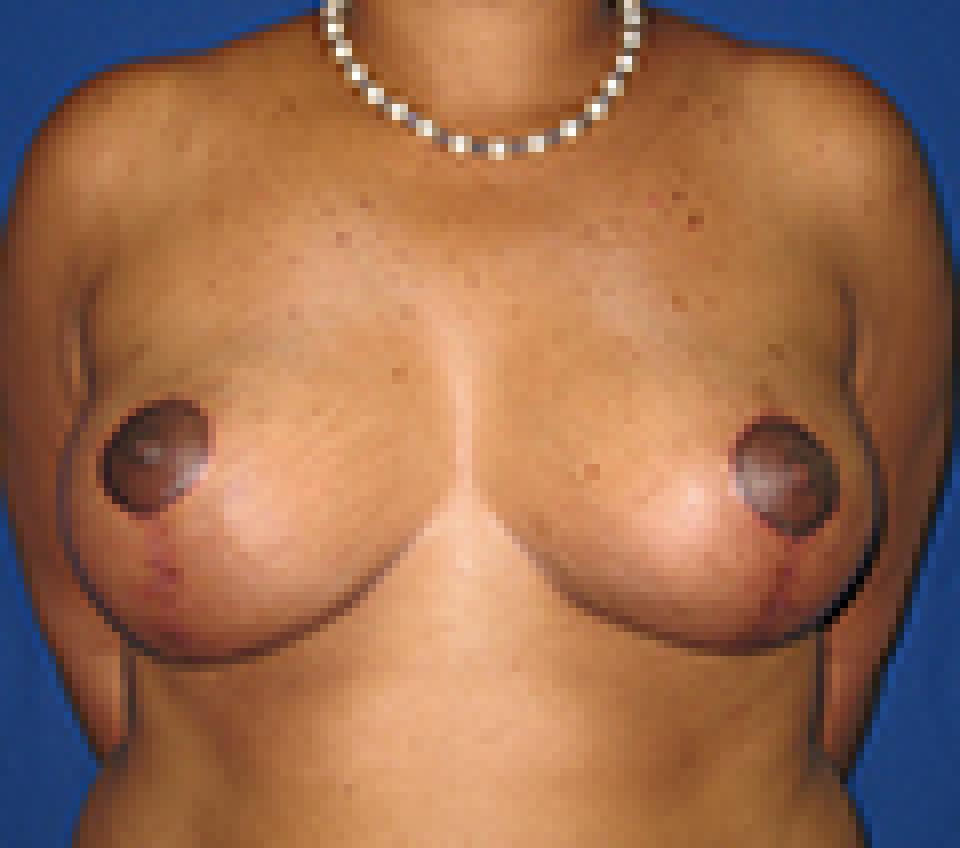 after
after
This 39 year old woman had a breast lift or mastopexy using a short scar technique which leaves behind scars in the shape of a “lollipop.” This technique, which I prefer to use, avoids any scars in the cleavage or on the side of the body beneath the arm. This makes swimsuit selection much easier if avoiding visible scars while wearing the swimsuit is a goal.
Candidates for a breast lift or mastopexy must have enough breast tissue to rearrange into a new breast shape that is typically shorter and rounder. If there is not enough breast tissue to rearrange and only excess skin, a situation that can occur when breasts involute following pregnancy, then an implant will be necessary to achieve a natural breast shape following surgery.
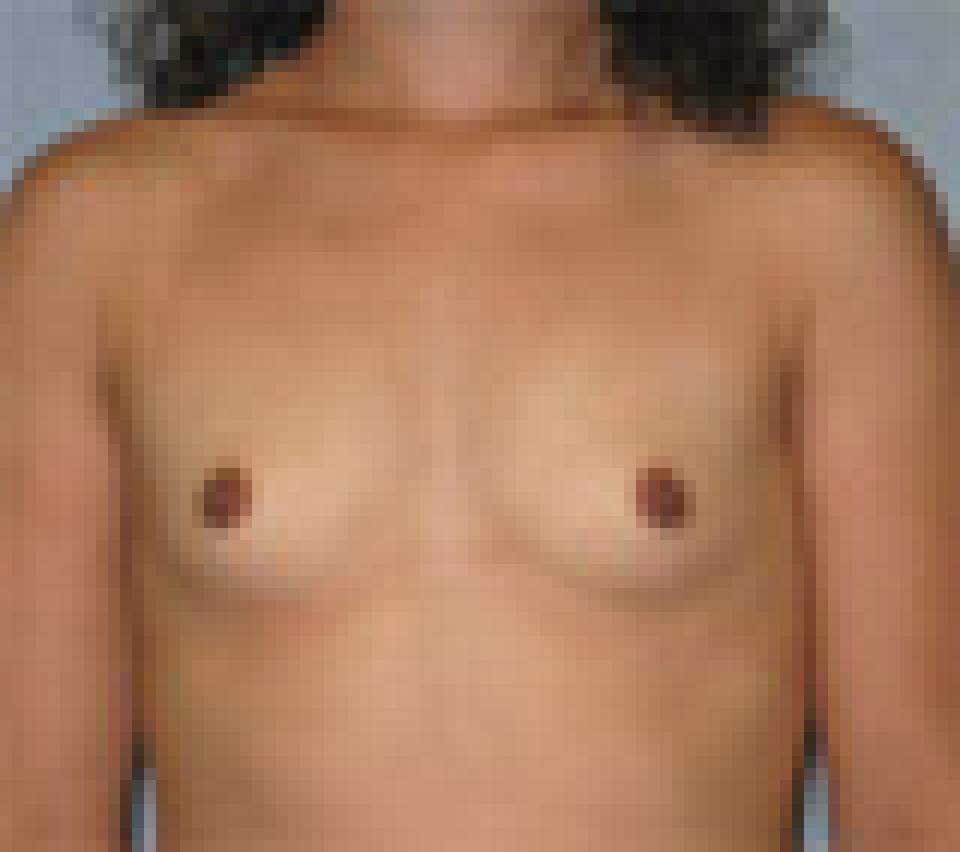 before
before
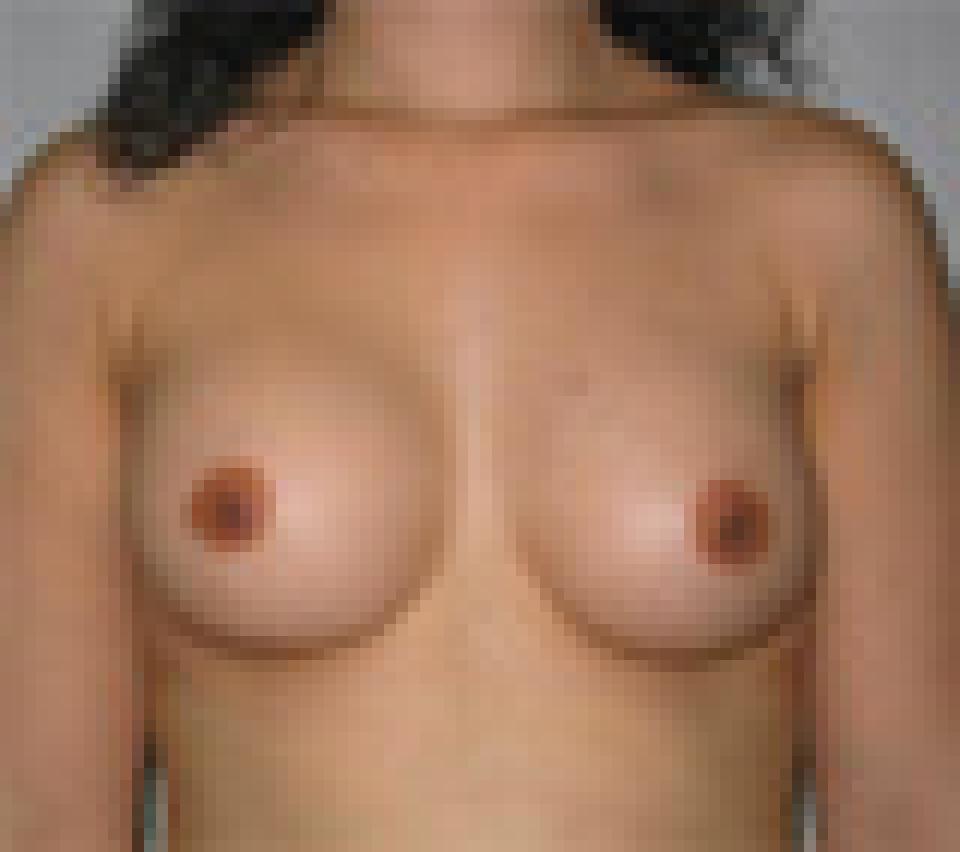 after
after
This case depicts a 29 year old woman who wished to have a larger and fuller bust. She underwent breast augmentation with smooth, round 350 cc saline implants.The implants were placed beneath her pectoralis muscles through an incision in the lower fold of the breast.
The post-operative photographs depict her at approximately 3 months after surgery. The infra mammary incision is a good option for women whose areolas are too small to undergo breast augmentation. Other options for such an individual include placing an incision in the axilla.
 before
before
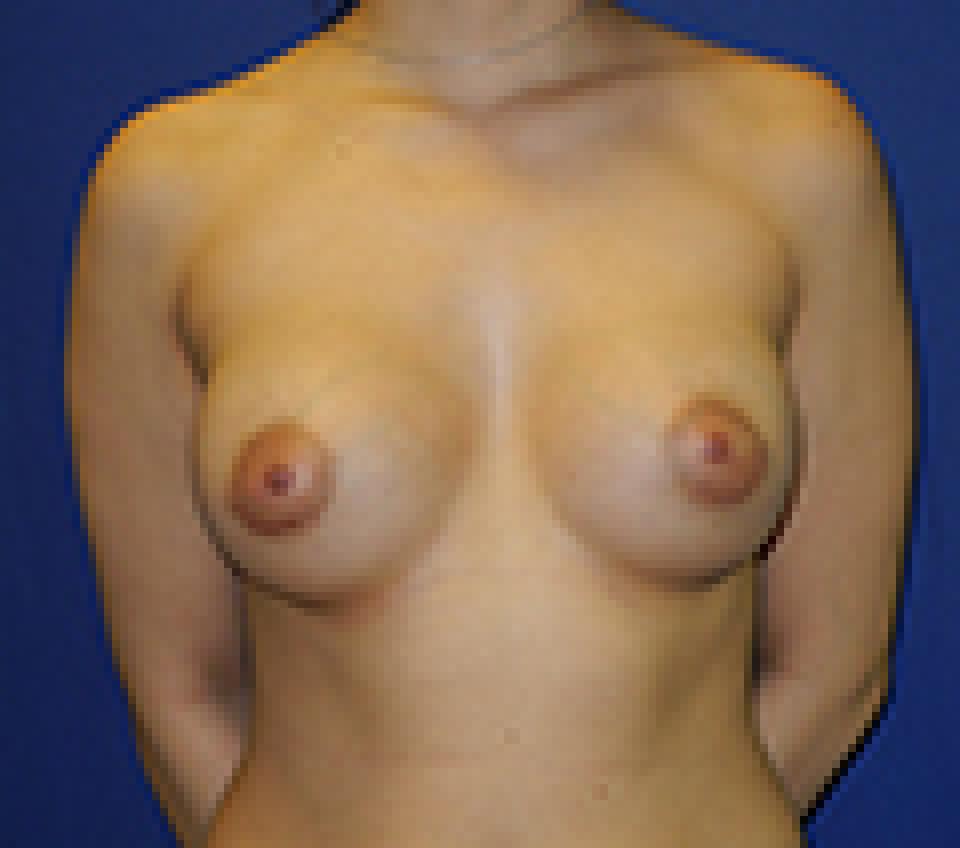 after
after
This 22 year old woman underwent bilateral augmentation mammaplasty using saline filled breast implants inflated to a volume of 320 cc’s place partially beneath the pectoralis muscle.
This individual wished to have the largest possible cup size while still appearing to have relatively natural breasts.
In my opinion, this implant size was the largest round implant that could be inserted, while still maintaining a natural appearing breast shape.
With the new anatomic shaped implants, which are shaped more like a teardrop, it is possible to achieve larger breast sizes and still maintain a natural shape.
 before
before
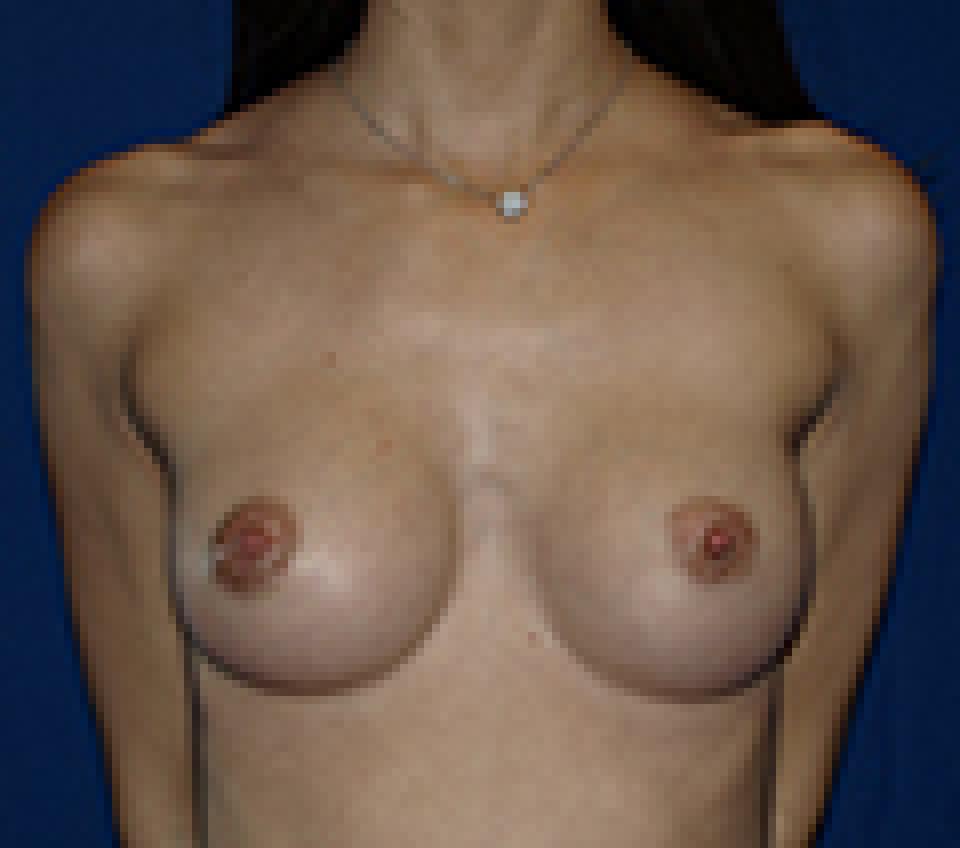 after
after
This 32 year old woman underwent breast augmentation using saline filled breast inflated to a volume of 195 cc’s and placed partially beneath the pectoralis muscle.
The individual has a mild pectus excavatum, a condition in which a person's breastbone is sunken into the chest. She also has a tendency to stand in a slightly kyphotic position, which means that her upper back is rounded and her head is relatively forward.
Obtaining a natural looking result in a patient who has pectus excavatum and postural abnormalities, as this individual has, can be challenging but is certainly possible.
In the case, the implants were inserted through a 3 cm incision at the lower border of the areola, which is the darker skin surrounding the nipple. These incisions typically heal quite well and can be difficult to see.
Dr. Belsley's Philosophy of Breast Augmentation
When it comes to deciding what approximate breast size you wish to achieve, the best advice I can give you is that you should be guided by your physical frame. Indeed, you may in fact be limited by it. In my practice, I select implants based upon your chest measurements, the quality of your breast skin and the size of your breasts prior to surgery.
I perform breast augmentation through a peri-areolar or inframammary approach and I place that vast majority of implants at least partially beneath the pectoralis muscle. My patients are welcome to select either saline or silicone filled breast implants. Silicone filled implants can in some cases achieve a more natural feel and may be a particularly attractive option for women with less breast tissue prior to surgery.
More >>Dr. Belsley's Philosophy of Breast Revision
I apply the same criteria to patients who have had their surgery elsewhere as I do to my own patients. I am typically reluctant to re-operate on a breast augmentation patient for minor issues, because each time one undergoes revision, many of the risks of surgery tend to be multiplied. This is why I spend a great deal of time discussing size preferences and the likely outcome of surgery with my patients pre-operatively. It is said frequently that the most common reason for re-operation of the breasts in women who have had breast augmentation surgery is that they wish to “go bigger.” Ultimately, I feel that this is a poor reason to undergo repeated surgical procedures that can only result in more scar tissue, which is unpredictable, and thinning of the native tissues, which are necessary to cover the implant and provide a natural looking result. I encourage patients to think carefully about the risks of revision in cases where there is not a major problem.
More >>